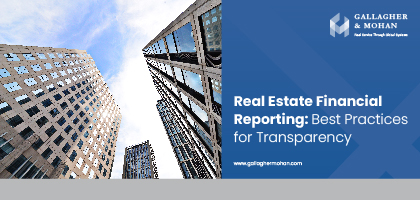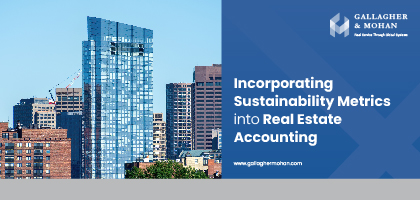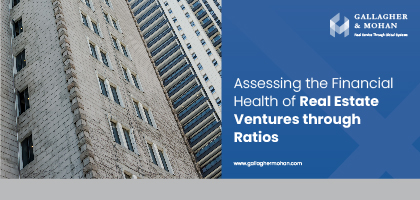18 August 2023
Net Lease Cap Rates See Fifth Consecutive Quarterly Increase
For the fifth consecutive quarter, cap rates within the single-tenant net-lease industry have risen, reaching an average of 6.40 percent. This marks a 13-basis point (bp) surge from the previous quarter. The most recent quarterly report from net-lease experts, The Boulder Group, headquartered in Wilmette, Illinois, unveiled these findings on Monday.
Breaking down the sectors, the second quarter Net Lease Market Report indicated that cap rates for single-tenant properties experienced sector-specific changes. Retail saw an increase to 6.17 percent (+12 bps), office properties rose to 7.27 percent (+27 bps), and industrial properties reached 6.80 percent (+3 bps).
Randy Blankstein, President of The Boulder Group, noted in a prepared statement that the increase in interest rates, coupled with attractive investment returns in alternative fixed-income opportunities, remains the chief catalyst for the upward push on cap rates. Due to these factors, transaction volume during the first half of 2023 trailed behind previous years.
The company highlighted that the extended duration properties spent on the market has contributed to a growing supply of vacant properties. Interestingly, this phenomenon persists despite a notable drop in the number of new properties introduced to the market in the second quarter, with a 20 percent decrease compared to the first quarter. Among property types, industrial properties experienced the least decline at about 11 percent, whereas office properties witnessed the most significant reduction, reaching 25.5 percent.
In recent years, the compression of cap rates has enabled property owners to achieve higher sales values compared to their original purchase prices, even when dealing with shorter lease terms. Jimmy Goodman, a partner at The Boulder Group, elaborated on this, pointing out that this approach is no longer feasible on a significant scale within the present cap rate landscape. Consequently, numerous property owners are opting to retain their assets instead of contemplating a sale.
Certain segments within the net-lease market are encountering an oversupply of specific tenant types, such as dollar stores, drug stores, and coffee establishments. This surplus has led to more pronounced increases in cap rates pertaining to these tenants.
John Feeney, Senior Vice President at The Boulder Group, highlighted that the expansion strategies of certain tenants, particularly dollar stores, are amplifying the availability of properties in the market. He went on to explain that cap rates in the dollar store sector have undergone some of the most substantial increases (28 bps) in the net lease industry.
The interplay between capital markets and cap rates is a key focus of the report. It underscores the influence of capital markets in driving up cap rates within the net-lease sector. Market observers are closely attentive to the forthcoming Federal Reserve meetings, with the prevailing expectation being that there will be multiple rate hikes before the year concludes.
Also Read: Shifting Dynamics in CRE Finance: Exploring Alternatives as Lenders Tap the Brakes
Understanding Net Leases: A Primer on Commercial Real Estate Trends
To gain insights into the evolving landscape of net lease trends, it is essential to grasp the concept of net leases themselves.
When it comes to leases for commercial real estate investment properties, they fall into two main categories: gross and net leases. The fundamental distinction lies in the party responsible for covering the property's operating expenses.
In a gross lease, these expenses are borne by the property owner. Conversely, in a net lease, the tenant assumes partial or complete responsibility for these costs, contingent upon the specific type of net lease they have agreed upon. There are four primary categories:
- Single Net Lease: Under this arrangement, the tenant covers the base rent along with a portion of property taxes.
- Double Net Lease: In this scenario, the tenant not only pays base rent but also contributes to property taxes and insurance.
- Triple Net Lease (NNN): The tenant takes on base rent and shares in property taxes, insurance, and maintenance expenses.
- Absolute Net Lease: Here, the tenant assumes base rent and the entirety of expenses tied to property operations.
Typically, the tenant's contribution to operating expenses is determined by the proportion of space they occupy. If they are the sole occupant, their share equates to 100%.
Among these four net lease types, properties with single tenants under triple net leases have garnered significant popularity among individual investors seeking exposure to commercial real estate without the complexities of day-to-day management. The valuation and worth of properties leased under triple net agreements are influenced by the property's capitalization rate (cap rate).
This understanding lays the groundwork for comprehending the dynamics at play within the net lease arena, shedding light on the factors that shape investment decisions and property valuations.
Understanding Cap Rates: Unveiling the Measure of Property Performance
At the core of property valuation lies the capitalization rate, often referred to as the cap rate. This metric serves as a pivotal performance indicator, elucidating the relationship between a property's net operating income (NOI) and its overall value. The formula to derive the cap rate is straightforward:
Cap Rate = Net Operating Income / Market Value
The outcome of this computation yields a percentage that functions as a crucial tool for investors, offering insight into the property's annual return if purchased outright with cash. Beyond its role in return assessment, the cap rate serves as an indicator of risk, thereby influencing investors' expectations. Elevated cap rates signify heightened risk, prompting investors to demand a more substantial return. Conversely, lower cap rates correspond to reduced risk, warranting a more modest return that investors find satisfactory.
Understanding the cap rate empowers real estate investors to navigate the intricate balance between returns and risk, making informed decisions in pursuit of optimal investment outcomes.
Unveiling Net Lease Cap Rates: Unraveling the Relationship with Property Value
As evidenced by the formula elucidated earlier, the intrinsic link between a property's cap rate and its valuation is paramount. In the context of net lease properties, cap rates and their dynamic trends are intricately shaped by factors that either augment or diminish the level of associated risk. Noteworthy influencers encompass:
- Property Type: Distinct property categories inherently carry varying degrees of risk. For instance, multifamily properties tend to harbor lower risk, thus commanding higher purchase prices accompanied by lower cap rates. Conversely, properties like hotels, with their heightened risk profile, demand lower purchase prices paired with higher cap rates.
- Tenant Quality: The creditworthiness of tenants plays a pivotal role. Established national entities boasting robust credit ratings introduce less credit risk, resulting in diminished cap rates. Conversely, tenants with more modest financial standing prompt higher cap rates, as they entail amplified credit risk.
- Real Estate Market: Robust markets, often urban centers characterized by substantial population growth, dictate lower cap rates due to their perceived lower risk. In contrast, secondary, tertiary, and rural markets command higher cap rates owing to liquidity constraints and a propensity to attract less esteemed tenants.
- Lease Duration: Properties graced with longer lease terms are inherently less risky (yielding lower cap rates) in comparison to their short-term lease counterparts. This discrepancy stems from the potential risk of tenant departure or lease renewal at a reduced rental rate.
- Property Condition: Newly completed or renovated properties present diminished risk (equating to lower cap rates) compared to aged properties. This distinction arises from tenants' willingness to pay elevated rents for modern accommodations.
Any factor amplifying a property's risk profile invariably impels cap rates to ascend, consequently diminishing its current market value. Conversely, measures that mitigate risk contribute to lower cap rates, thereby elevating the property's market value. This intricate interplay underscores the complex balancing act between risk and value, guiding investors as they navigate the net lease landscape.
Conclusion
Understanding the dynamics of net lease cap rates holds the key to informed investment decisions. Cap rates, serving as the linchpin between property value and performance, offer a lens through which investors can gauge returns and evaluate risks. The complex interplay of property type, tenant quality, market trends, lease length, and property condition shape the cap rate landscape, influencing the market value of properties.
Striking the right balance between risk and value requires astute insights and expertise. This is where Gallagher & Mohan Commercial Real Estate Financial and Accounting Services step in as your reliable partner. With our extensive experience and profound understanding of the industry, we are dedicated to guiding you through the intricacies of net lease investments.
Our team's proficiency extends beyond the surface to provide in-depth analyses of market trends, tenant creditworthiness, and property dynamics. By leveraging our comprehensive suite of services, we empower you to make sound investment choices. Whether you are seeking to navigate tenant negotiations, assess property financials, or optimize your investment portfolio, Gallagher & Mohan is your ally.



